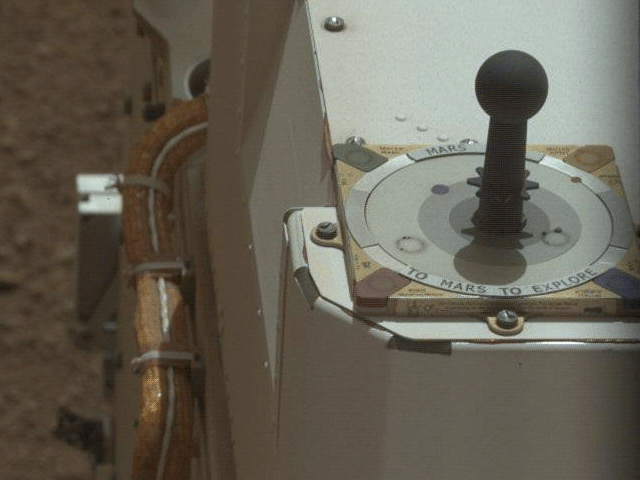Bill Nye • Aug 14, 2012
Curiosity's Marsdial is on Mars!
Following the successful landing of the Curiosity rover, it is gratifying indeed to see the third MarsDial© photometric calibration (cal) target on the planet Mars. It is something near and dear to me personally, and it's good for all of us, because it helps us do good science.
As I'm sure you're aware, geologists love rocks, and they especially love the rocks on Mars. The first thing they all want to know about a rock is what's it made of. For that, it's good to just take a look at the color of the rock surface. When everything is being done on the alien landscape of another world, it's easy enough to electronically get the color wrong, or not quite right. To that end, artists, photographers, and a few scientists have noticed that by looking at the color of a shadow on a neutral white or gray background, you can infer the color contributed to the scene by the sky.

On Earth, shadows take on a sky blue tinge (what I like to call "cerulescence"). On Mars, it's a salmon color (what I like to call "arangidescence"). And so, the MarsDials bear a small metal post that casts a shadow onto some white and gray rings of known value or grayness. In the coming weeks, we will electronically create some sundial-style hour lines on Curiosity's MarsDial. Along with good geology, we'll do some timekeeping with the Sun's apparent motion across an alien sky. Stay tuned for our upcoming parallel EarthDial project. We want people everywhere to do some sundialing to help know and appreciate our place in space.
Support our core enterprises
Your support powers our mission to explore worlds, find life, and defend Earth. You make all the difference when you make a gift. Give today!
Donate

 Explore Worlds
Explore Worlds Find Life
Find Life Defend Earth
Defend Earth

